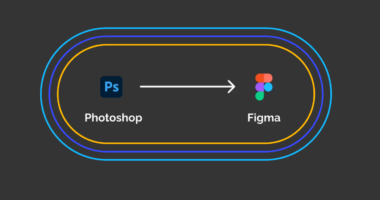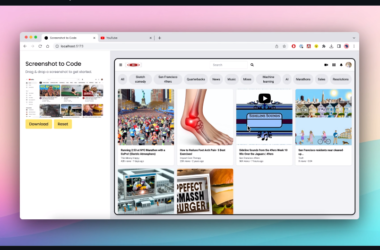Unlock Your Career Potential with Mastery in UX/UI Design
What is UX Design, The fields of user experience (UX) and user interface (UI) design play integral roles in shaping engaging experiences across the digital landscape. As technologies continue advancing at a relentless pace, the need for intuitive, purposeful design has never been greater.
For aspiring professionals, attaining complementary skills in both UX and UI lays the foundation for a dynamic career path ripe with opportunity and impact. But beyond lucrative prospects, cultivating expertise across these domains empowers one to enrich people’s lives through thoughtful solutions.
Let’s explore how expanding your design acumen of these related disciplines can optimize processes, boost value across teams and bring ideas to vibrant life at scale. With dedication to continuous learning, the possibilities are endless.

Defining the User Experience Design Process
User experience design (UX) refers to conceptualizing the holistic journey a person has when interacting with any digital product or service. The goal is delivering value and meaning through each touchpoint, whether solving problems, providing entertainment or aiding critical tasks.
Core responsibilities for UX designers revolve around strategy, research, prototyping and analysis. This includes conducting user research to understand needs, creating personas and workflows, developing clickable prototypes and overseeing usability testing in iterative cycles.
Their bird’s-eye approach establishes foundational structures and coherent flows upon which refined interfaces are built. With people at the heart of design decisions, strong UX skills equip one to positively impact users across industries.
Focusing on Tactile Interface Craftsmanship
Meanwhile, user interface (UI) design handles the nuts and bolts of visually-driven interaction at a granular level. As the technical counterpart, UI refers to actual page construction through elements like responsive layouts, buttons, menus and engaging multimedia components.
Some key responsibilities for UI specialists involve maintaining visual consistency through style guides, conceiving component-driven templates, crafting interactive animations and ensuring crisp performance across devices. Their attention to nuanced details separates polished interfaces from forgettable ones.
With amplified technical dexterity, UI designers play a pivotal role in transmuting complex visions into vibrant realities at both macro and micro scales.
UI UX Design Process Guide for B2C B2B Designers

Complementary Synergy Powers Impact
Though operating at different vantage points, UX and UI design is intrinsically intertwined, with one actively informing the other throughout product development cycles. Their coordinated efforts lay the tracks for seamless, intuitive journeys that foster lasting impressions.
Possessing working knowledge of both disciplines fosters transdisciplinary collaboration, contextualizes individual contributions and lends versatility coveted by employers. It primes one to take ownership of projects from ideation to launch while cultivating transferrable leadership skills.
Mastery of design fundamentals, research methodologies, prototyping tools and technical expertise future-proofs careers as interaction evolves. Ultimately, melding strategic mindsets with hands-on dexterity lifts outcomes to new heights.
See also: Figma to Code | 10 Powerful Figma Plugins That Seamlessly Convert Your Designs to Code
Illuminating the what is UX Design Process
Let’s dissect key facets of user experience design for a deeper understanding of its people-first underpinnings.
Content Strategy
Formulating purposeful messaging, organized information and dynamic multimedia enrich interactions. Content strategy focuses on planning tools like audits, mapping and style guides. It ensures coherence across touchpoints.
User Research
The foundation for effective UX design stems from qualitative and quantitative research illuminating user needs, pain points, mental models and more. Common methods include surveys, interviews, product testing and persona development.
Wireframing & Prototyping
Clickable prototypes allow iteratively validating designs at varying levels of fidelity from ideation to finalization. Wireframes flesh out skeletal structures while prototypes test functionality, flows and key features.
Usability Testing
Designs continuously evolve through rigorous testing involving representative users and measured metrics. Formative evaluation optimizes experiences prior to launch while summative analysis gauges post-release impact.
Analytics & Optimization
Data-driven insights from tools like Heatmaps, conversionfunnels and A/B testing pinpoint friction points amendable through ongoing refinement. Optimization keeps experiences feeling fresh.
Information Architecture
Well-planned information architectures uncover the optimal taxonomy, sitemap and labelling approach facilitating discovery, comprehension and task completion.
Mastery of these specialized skillsets elevates one’s strategic value across multi-disciplinary product teams.
Exploring the UI Design Process
Responsible for crafting harmonious, polished interactions, user interface design blends technical proficiency with an artistic sensibility.
Design Systems
Reusable and customizable design systems ensure visual coherence across expansive digital ecosystems through standardized components, patterns and responsive frameworks.
Interactive Design
Deliberate animations, transitions and touch optimizations bring nuanced experiences to life, facilitating understanding and engagement throughout apps and sites.
Responsive Design
Fluid, adaptive interfaces accessible on any device optimize usability universally for all manner of form factors from smartphones to living room screens.
Visual Design
Attention to nuanced details like iconography, typography, imagery and brand stylistic elements elevates interfaces above functional mediocrity into works of digital art.
Prototyping
Rapidly iterating interactive prototypes simulates real functionality for evaluative usability testing prior to development, minimizing risk while optimizing outcomes.
Documentation
Thorough documentation of design systems and technical specifications streamlines handoff to developers while establishing professional best practices.
Mastery of UI craft positions one on the vanguard of interaction innovation with transferrable expertise across verticals.
Strategies for Professional Growth
To capitalize on these synergistic fields’ upward career trajectories, continuously expand your toolkit:
- Follow industry leaders on platforms like Dribbble, LinkedIn and Twitter for inspiration
- Audit open-source projects to analyze techniques from the world’s top practitioners
- Practice through side projects, pro-bono gigs and freelancing to build experience
- Hone hard and soft skills with self-paced resources, conferences and professional communities
- Consider supplementary courses in fields like Motion Design, Programming and Business
- Maintain portfolios showcasing process, problem-solving and impact through measurable outcomes
- Never stop learning as interaction evolves – passion drives meaningful contributions
Whether directly applying skills or managing broader design efforts, cross-training elevates strategic impact. With dedication to lifelong curiosity, growth opportunities are unlimited.
10 pro tips for becoming a better UX designer:
- Conduct thorough user research. Get to know your target users by conducting surveys, interviews, usability tests and more. Deep user insights should inform all your design decisions.
- Create user personas. Developing fictional user personas that represent your real user groups allows you to design for specific needs in a tangible way.
- Map user flows and scenarios. Create sitemaps, process flows and use case scenarios to understand how users will interact with your design from start to finish.
- Wireframe early. Simple paper wireframes allow you to prototype and test layouts, navigation and interactions before visual design work begins.
- Iterate constantly. Get feedback on your designs early and often from both users and peers. Refinement is key – be willing to rework concepts based on learnings.
- Use prototyping tools. Prototyping tools like Figma and InVision Stream allow for interactive mockups to gather valuable user testing feedback.
- Think visually and verbally. Carefully crafting UI elements, flow, tone and messaging enhances user comprehension and retention.
- Test, then test again. Rigorous usability testing is the only way to identify friction points impeding understanding, conversion or satisfaction.
- Ask “Why?” not just “What?”. Get to root causes through deliberate research – superficial fixes may not resolve underlying problems.
- Communicate value clearly. Justify design recommendations empirically by connecting research findings directly to proposed solutions.
Ready to Enhance Your Edge?
For aspiring or experienced designers compelled to enrich human experiences through thoughtful solutions, cultivating multi-disciplinary strength across UX and UI lays robust foundations.
Elite programs impart accelerated, project-based training on par with traditional academics. Immersive learning environments provide networking, mentoring and direct pathways to in-demand roles alongside dedicated career support.
Whether pioneering new frontiers or elevating within established organizations, strategic fusion of user-centric mindsets and technical dexterity grants maximal versatility and impact – empowering you to solve humanity’s greatest challenges through design.
What experience are you waiting to bring to life? The journey starts by exploring available resources and never being afraid to start. Interaction awaits your innovative visions. source
what is ux design, what is user experience design, what is ux, what does a ux designer do, what do ux designers do, what is ux and ui, what is ui, what is a ui ux designer, what is ui ux designer, ux design what is it, what is ui ux, what is ux ui design, what does a ux ui designer do, what ux designer do, what does ux stand for, what is user interface design, what does a user experience designer do.




